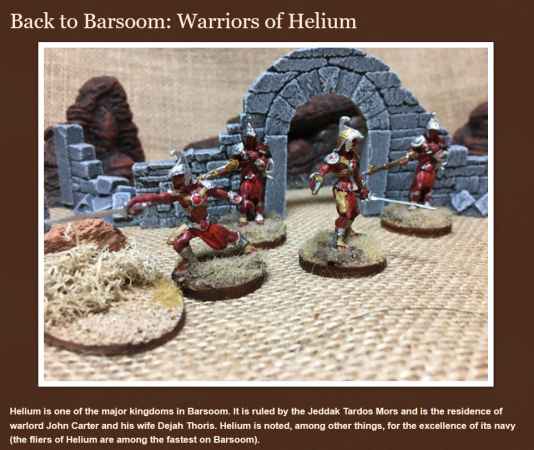
Then I stumbled on something in the quilting supplies section at Wal-mart (a department store) that seemed to be an answer: a large Shape Cut board, cut into 1/2" strips.

All I needed to do in order to get my 1/2" x 1" acrylic bases would be to cut the strips off the board, then cut the strips at 1" intervals (and the strips came conveniently marked!). The Shape Cut board wasn't cheap, but when I figured out how many bases I could make from one board, and figured the price per base, it seemed reasonable. (But am I ever going to need that many grav-tank bases? Don't ask...)
Making Bases

I tried cutting the board with hand tools and even with a hot wire, but what worked best was a cutting wheel in a hand-held motortool. I then used a sanding drum in the same motortool to neaten up the ends.

I could have stopped right there, but then I remembered that in my supply bin I actually had an acrylic polishing kit that I'd never used. The kit didn't even have a manufacturer listed. It contained six rubbery grades of sandpaper, a soft sanding block, a polishing cloth and liquid, and an instruction booklet. The idea was simplicity itself - sand the acrylic with each progressive grade of sandpaper, changing directions each time, and then end up by polishing with the liquid abrasive.
I tried it out on one of the bases, intending to polish up the base ends where I'd cut the pieces from each other. The surface was too rough for even the coarsest polishing sheet, so I worked through three grades of standard sandpaper before taking on the six grades of polishing paper. The work was boring but didn't take long, and the edge polished up nicely - in fact, it looked better than the other edges. So I polished those too.
So I polished the edges on all of the bases. (Perhaps I'm too much of a perfectionist?)
One thing I learned was that polishing edges is much easier than polishing a flat acrylic surface, and I'm not really sure why. Two of my bases had become nicked when I cut them out, and I thought to polish out the nicks just as I had polished the edges. Well, it was a lot more work, and I never really did get a good finish on the tops/bottoms. But the edges were easy to do, though definitely boring.
Forming Attachments
The final step was to glue the tanks to their new bases. It was at this point that I first realized that the Osario 4000 didn't have a flat bottom - due to one of the "access panels" on the lower hull, there was one corner which hung down lower than the others. I didn't want to sand off the projection, especially since I didn't want to repaint anything, so I left the tanks as they were.
I first used gap-filled superglue to attach the models, but noticed (after the first two platoons were done) that the base tops were becoming foggy (perhaps crazed by the glue, or perhaps the glue was turning that color). Since this was under the tank it was barely noticeable, but I decided to try something else...
Being a glue collector, I'd recently picked up something labeled "Poxy Power - STIX-ON CONTACT - All-Purpose Adhesive - THE incredible flexible crystal clear formula." It came in a tube, was gloopy without being thick, and once it started coming out of the tube it didn't like to stop! A test showed that it didn't fog acrylic, so I attached the third platoon with this adhesive.
Meanwhile, I discovered (using scraps) that my "incredible" glue didn't have a lot of holding power. So for the fourth and fifth platoons, I used two-part resin as the adhesive. The resin was more of a pain to use, but being thicker was actually easier to apply just to where I needed it.







